10 Shrubs with Berries for Fall and Winter Bird Treats
Photo:
Homecare119 via Pixabay
Berries are an irresistible treat for birds, particularly in winter when food is scarce. The fruits produced by these shrubs provide calories and crucial nutrients that birds need, particularly during the cold winter months when other natural food sources are nonexistent or buried in the snow. Here are some of my favorites to consider for your garden.
Winterberry
Winterberry is a native holly shrub which delivers fireworks of glossy, bright-red berries from late summer through early spring, making it a must-have for the winter garden. Songbirds love these berries. Winterberry grows best in full sun and tolerates wet soil in spring and drought in summer.
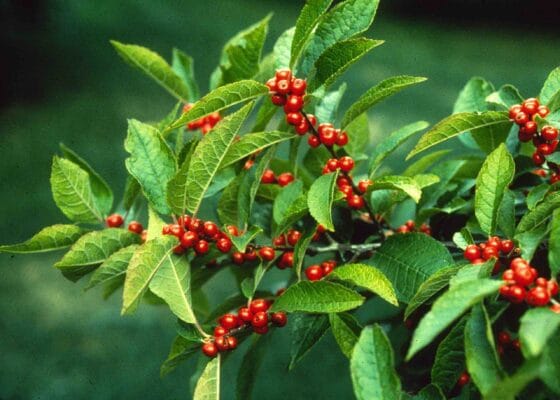
Mountain Ash
Mountain Ash spring blooms give way to drooping clusters of brilliant red berries in the fall and winter. While most varieties can also be appreciated for their blazing fall leaf display, the leaves of the ‘Cardinal Royal’ Mountain-Ash turn a particularly royal reddish-purple in the fall.
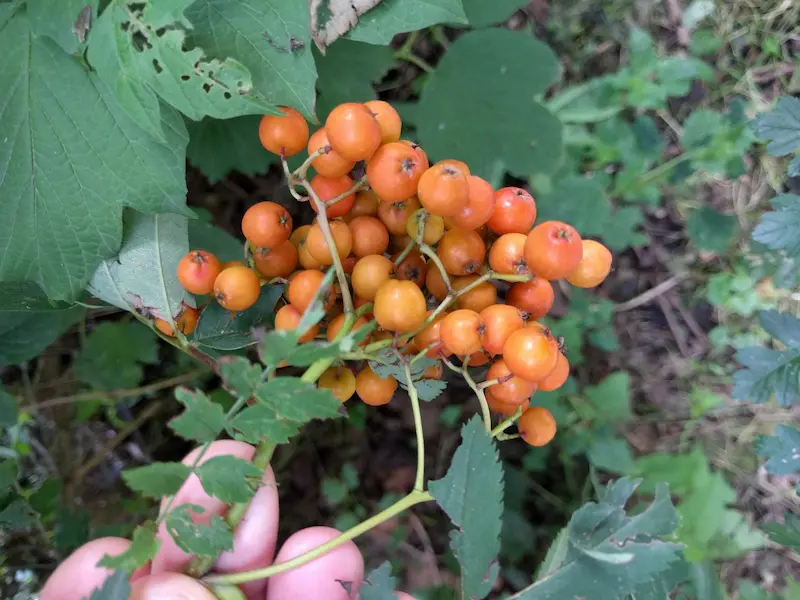
Credit: Rudolphous, CC BY-SA 4.0 via Wikimedia Commons
Cranberry Bush
Cranberry bush is a this low-key shrub is perfect for the back of a border, where its dense form will create a backdrop for showier summer plants. Come fall, however, it stands out with deep burgundy foliage and large, bright red berries.
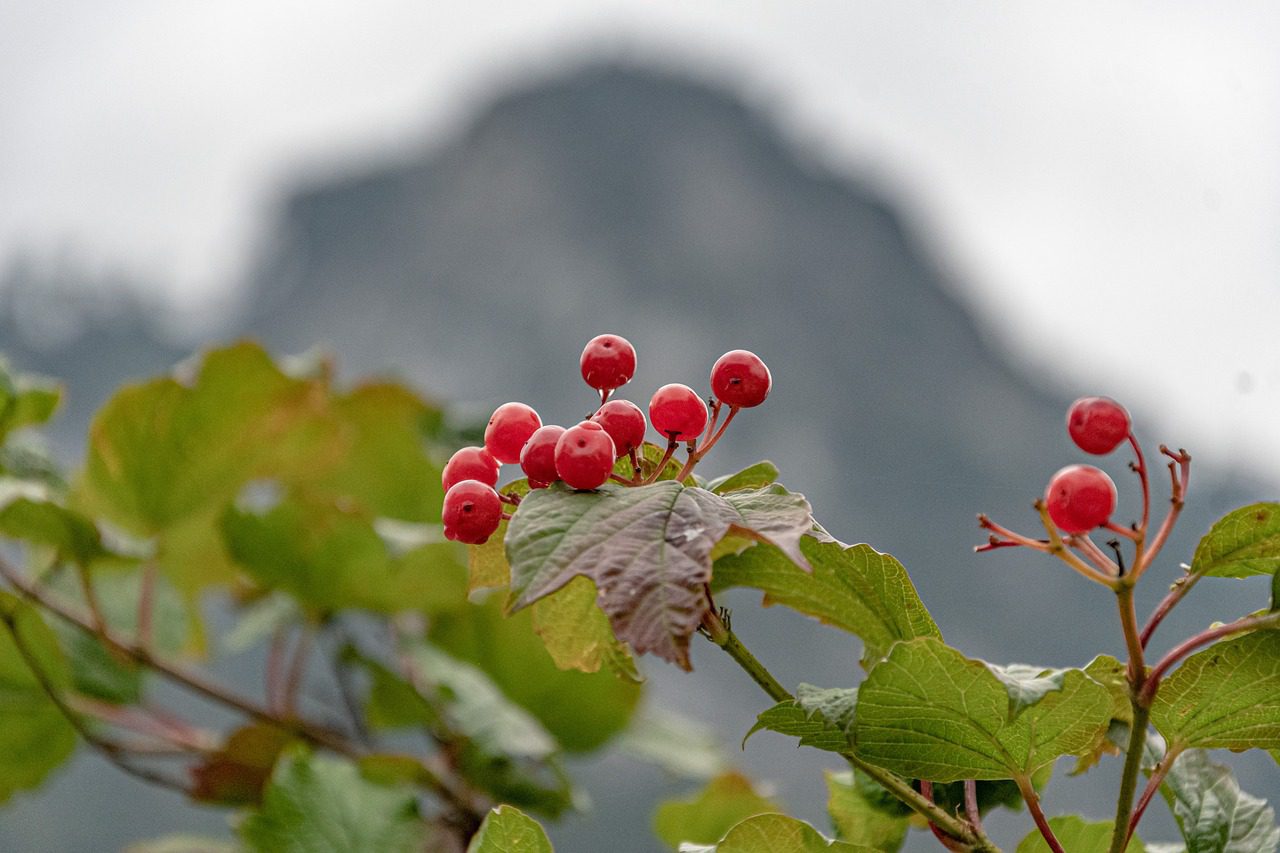
Coralberry
Coralberry is another handsome shrub that waits until winter to turn on the charm. Small, yellowish summer flowers turn into purplish-red fruit clustered along arching stems beginning in October.
Tartan Dogwood
Tartan Dogwood provides four seasons of decorative garden features: stunning fall colour, attractive berries, showy red stems and lovely, variegated summer foliage (depending on the variety). Since it grows more slowly than red-twig dogwood, it works well in smaller gardens.
Snowberry
Snowberry is noted for their very ornamental, pure white berries. Snowberry have arching branches that bear beautiful clusters of white berries that last well into winter. This shrub tolerates a range of soil types, even clay. Bonus feature: the small white and pink flowers in summer attract butterflies, hummingbirds and pollinators.
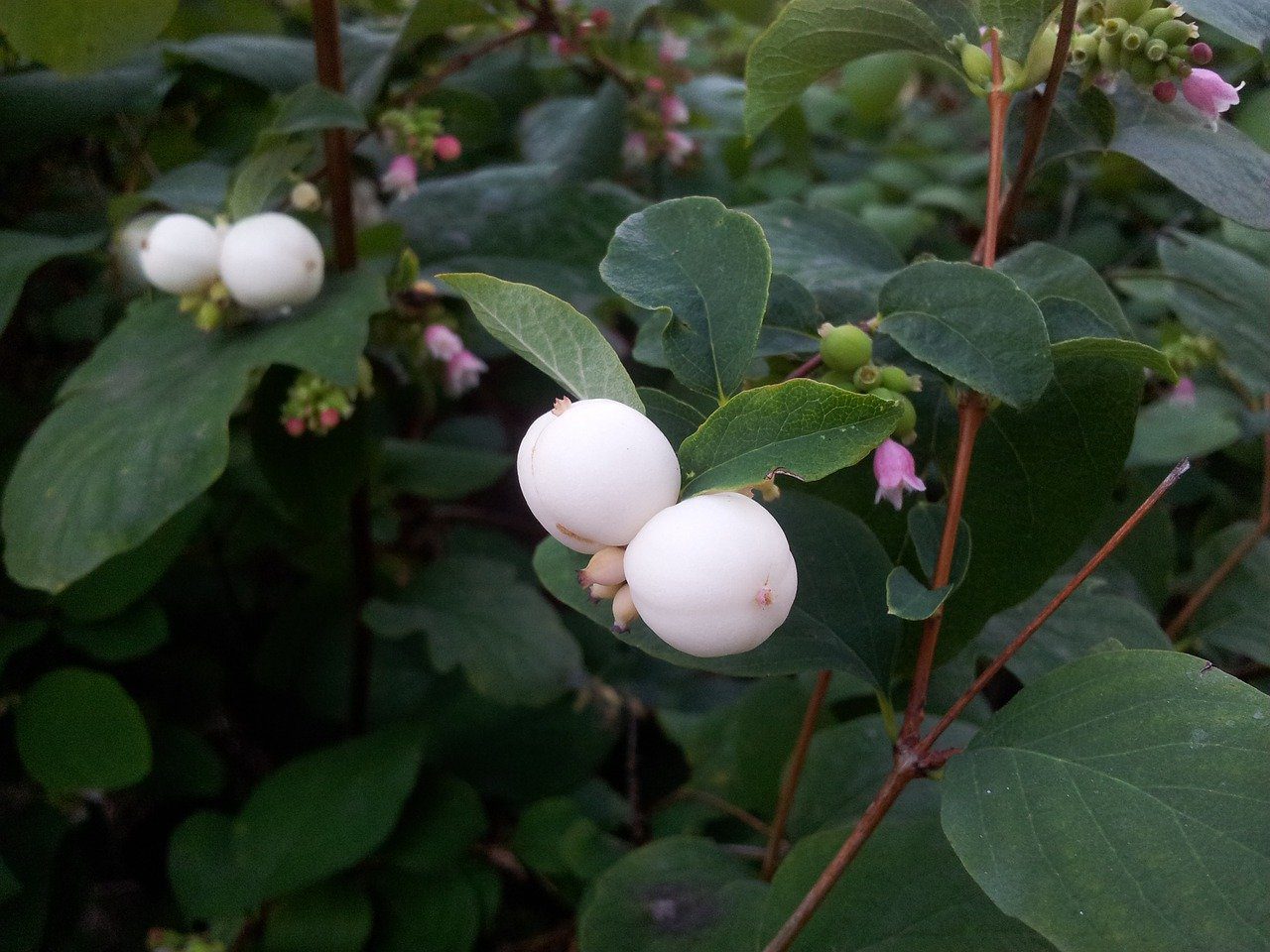
Serviceberry
As if the delicious deep blue berries weren’t enough, the Serviceberry (tree or shrub format) supplies showy white flowers in the spring and gorgeous yellow foliage in the fall. This shrub is often used to fill the role of a small tree, growing to about 15–18’ tall, and is adaptable to many garden sites.
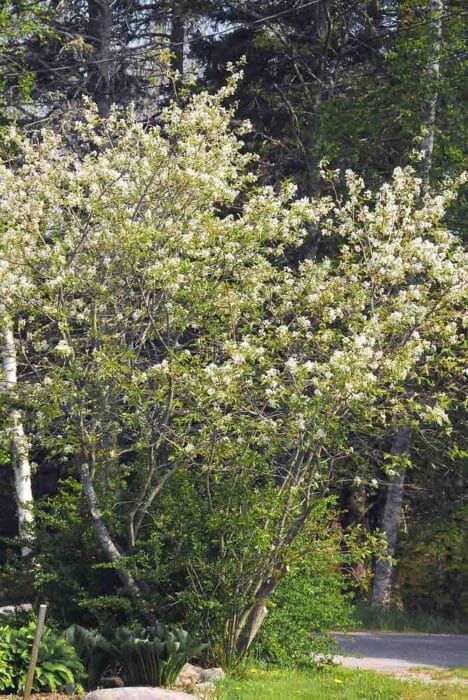
Chokeberry
Chokeberry is a tough, native shrub that produces either red or black autumn berries with an attractive purple/red fall color. Chokeberries are lower in fat and protein, so birds wait until the more desirable foods are gone before gobbling them up.
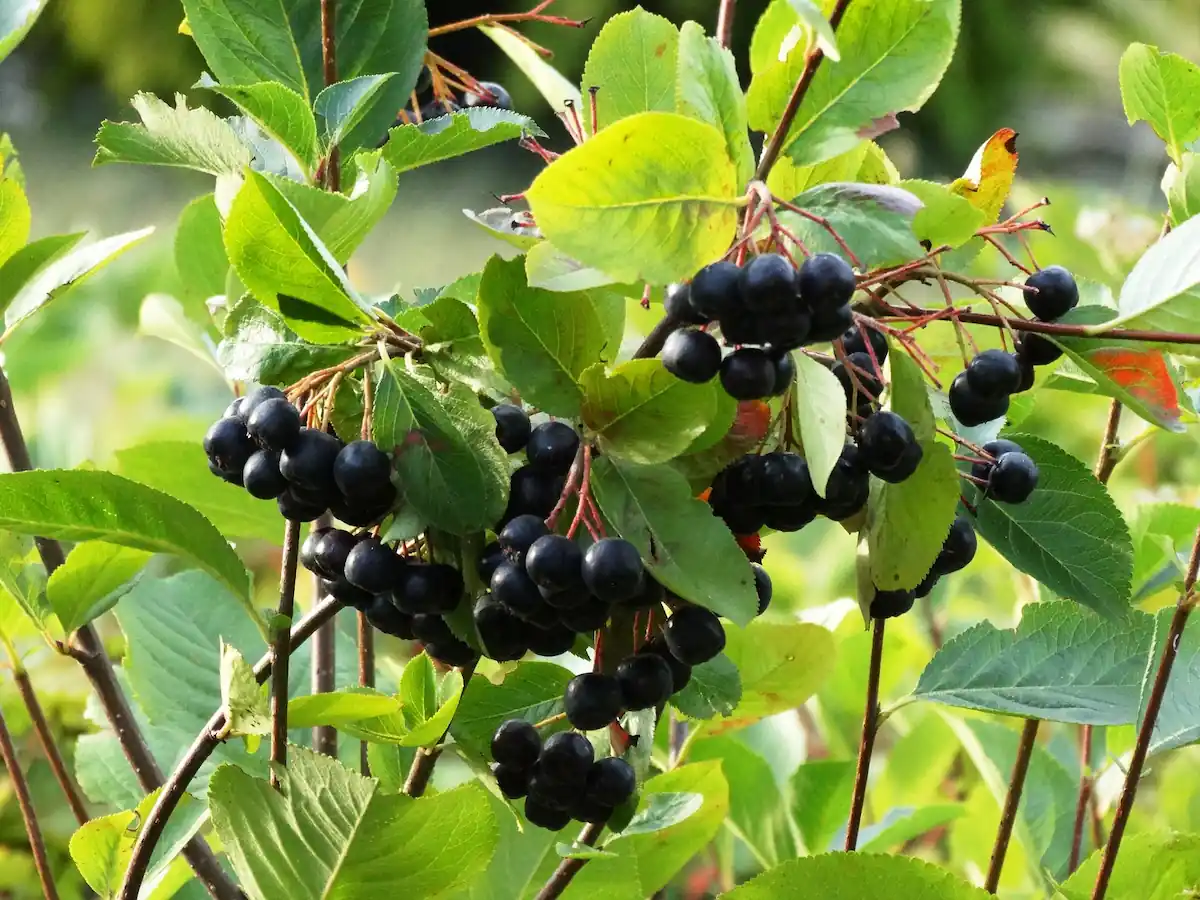
Elderberry
This luxurious shrub features long, graceful branches. In early summer, the shrub produces flat white flower clusters that turn into purple berries by late summer. Butterflies love the showy, fragrant blooms and the berries are relished by robins, bluebirds and many other songbirds. You’ll need plenty of room for this shrub at 8+ feet tall and wide.
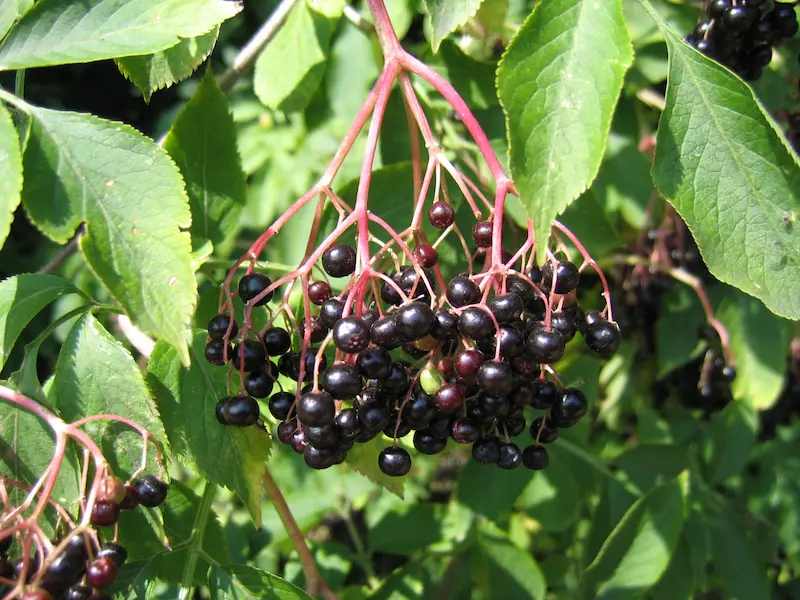
Credit: Agnieszka Kwiecień (Nova), CC BY-SA 3.0 via Wikimedia Commons
Beautyberry
Beautyberry is perhaps my favorite. It’s a little understated until late summer, when its tiny pinkish-lavender flowers morph into abundant clusters of small, violet-purple berries. The ‘Early Amethyst’ variety is a great choice for smaller gardens as it only reaches 3-4’ tall and wide.
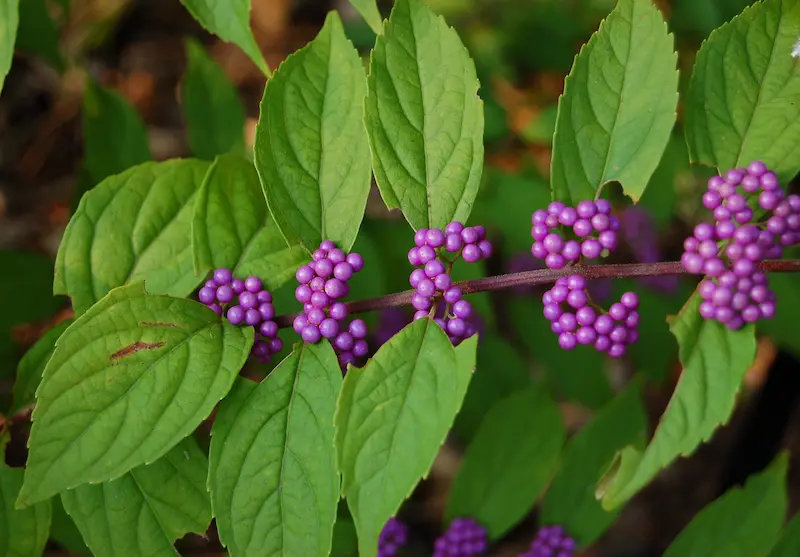
Credit Photo (c)2007 Derek Ramsey (Ram-Man), CC BY-SA 2.5 https://creativecommons.org/licenses/by-sa/2.5, via Wikimedia Commons







Leave a Reply
You must be logged in to post a comment.